 Renovating a Listed Property in London Plumbing & Heating Tips
Renovating a Listed Property in London Plumbing & Heating Tips
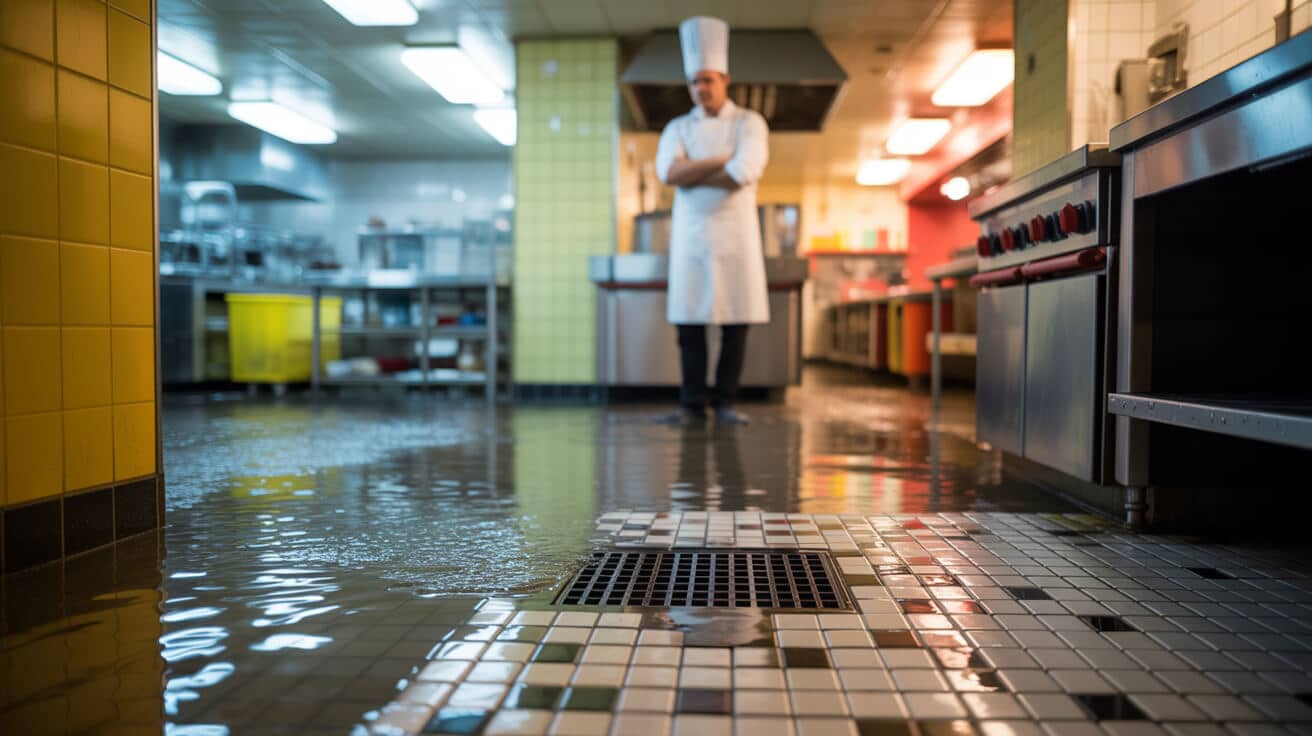
What Unique Plumbing and Heating Hazards Do London’s Listed Homes Really Hide?
Stepping inside a London listed property isn’t just about admiring original brickwork or sash windows—it’s about embracing a hidden network of risk underpinning every tap, radiator, and waste pipe. Whether you’re a homeowner with grand renovation dreams, a landlord working to modernise inventory, or a managing agent fielding tenant expectations, England’s heritage regime turns daily plumbing and heating decisions into potential legal, financial, and reputational flashpoints.
Heritage isn’t just about what you see; it’s about every decision left hidden behind the wall.
Unseen risks that others miss:
- Invisible Rulebook: Pipes, radiators and manifolds often snake through protected timber, stone, or lathe-and-plaster voids. Any adjustment—however minor—can demand prior approval.
- Material and Routing Limitations: Plastic pushfit joints risk rejection, visible copper feeds may need period-correct trunking, and even “minor” plumbing swaps (toilets, towel rails) can cross the line if they alter original layouts.
- Surprise Compliance Triggers: Touching “historic fabric”, changing pipe routes, or fitting new boilers/flues near external walls or roofs can all mandate formal Listed Building Consent (LBC), not just Building Control sign-off (Historic England, 2024).
- Penalties for Guesswork: Swapping a valve in “like-for-like” style with modern components? If the part is visible—or if routing, material, or pressure handling shifts—the risk isn’t just restoration cost: it’s compulsory undoing of all works, insurance refusal, or years of red-flagged survey history.
For asset managers and commercial landlords: Failure introduces liability to insurers and surveyors—and repeat-snag issues drag on value at every handover, sale, or lease renewal.
London’s heritage pipeline doesn’t allow cutting corners. A missing compliance step isn’t just a speed bump; it’s a trapdoor under your future returns.
What Permissions Must You Secure—And How Does That Really Shape Every Upgrade?
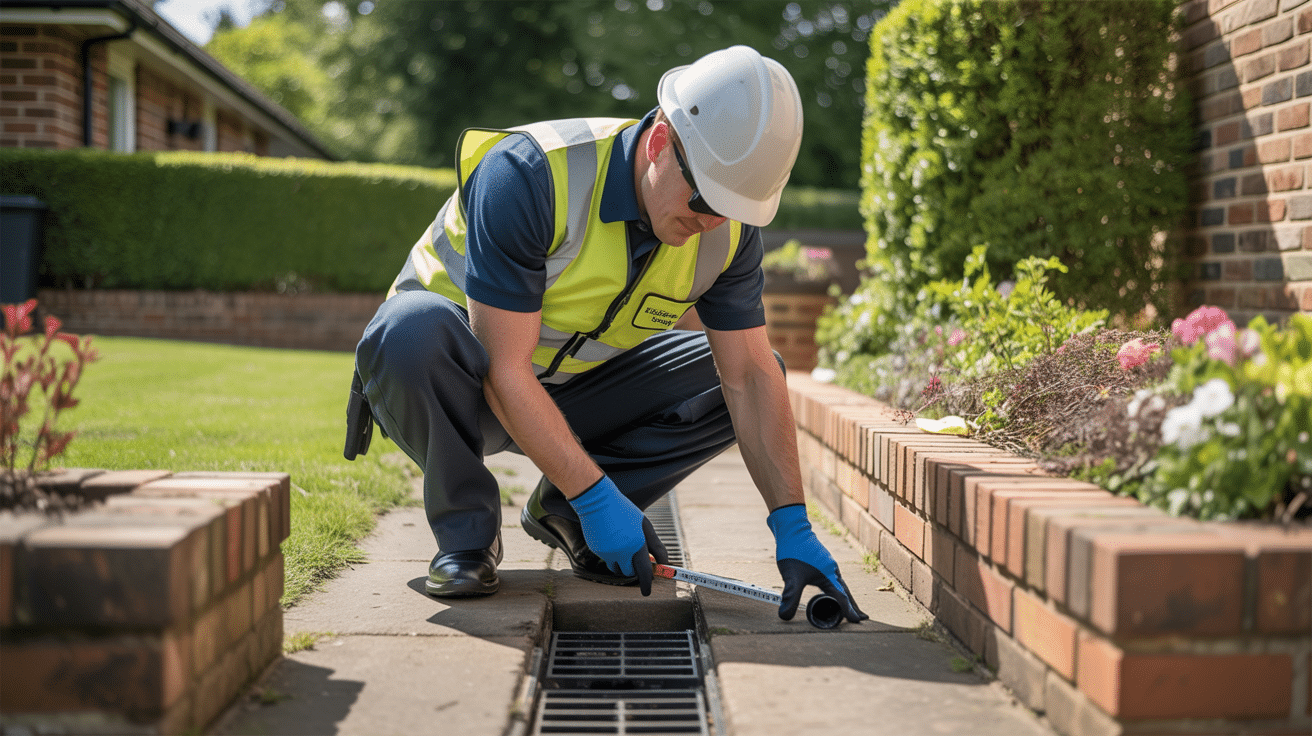
It’s a friction point for every stakeholder: who decides what you can update in a listed building, and which permissions are truly non-negotiable? Forget the myth that “just the big stuff” trips red tape. In heritage homes, the fine print covers everything from chasing a pipe behind lath to installing a digital smart stat.
Every pipe move tells another page of the building’s storey—Conservation reviews every edit before you turn the page.
The permission process isn’t just protocol—it’s asset defence, legal protection, and reputation insurance:
- Conservation Officer Engagement: Your very first email should be to the Conservation team—long before quotations or specs even land on your desk. An informal heads-up is a paper trail if rules are called into question.
- Documentation is Everything: Boroughs (especially Camden, Westminster, Kensington & Chelsea) expect diagrams, photographs, and part/finish specifications for each visible or semi-visible alteration. This helps expedite LBC and demystifies plans for non-technical planners.
- Written, Not Verbal, Approvals: Even “small works” require a file. Modest changes like re-routing radiator pipework, adding T-junctions, or swapping to low-profile showers mandate email or hard-copy endorsement.
- Heritage-Qualified Engineers Only: Plumbers must have a list of heritage references—consent letters, past jobs, before/after documentation. Most boroughs ask outright, and peer/insurer reputation hinges on these.
- Allow Feedback as Value: The first response from Conservation may come with tweaks or a hold. Treat each comment as a free expert peer review, not a blockade.
Shortcuts cost more in a listed property: Post-hoc enforcement power is strong—reversal orders, fines, and even criminal penalties if fabric is irreversibly damaged.
For agents and property teams: Build compliance checks into routine pre-letting and pre-sale steps. Surveyors and legal counsel now expect these files on every transaction’s desk.
Can Modern Efficiency Upgrades Avoid Costly Heritage Damage (and Breach)?
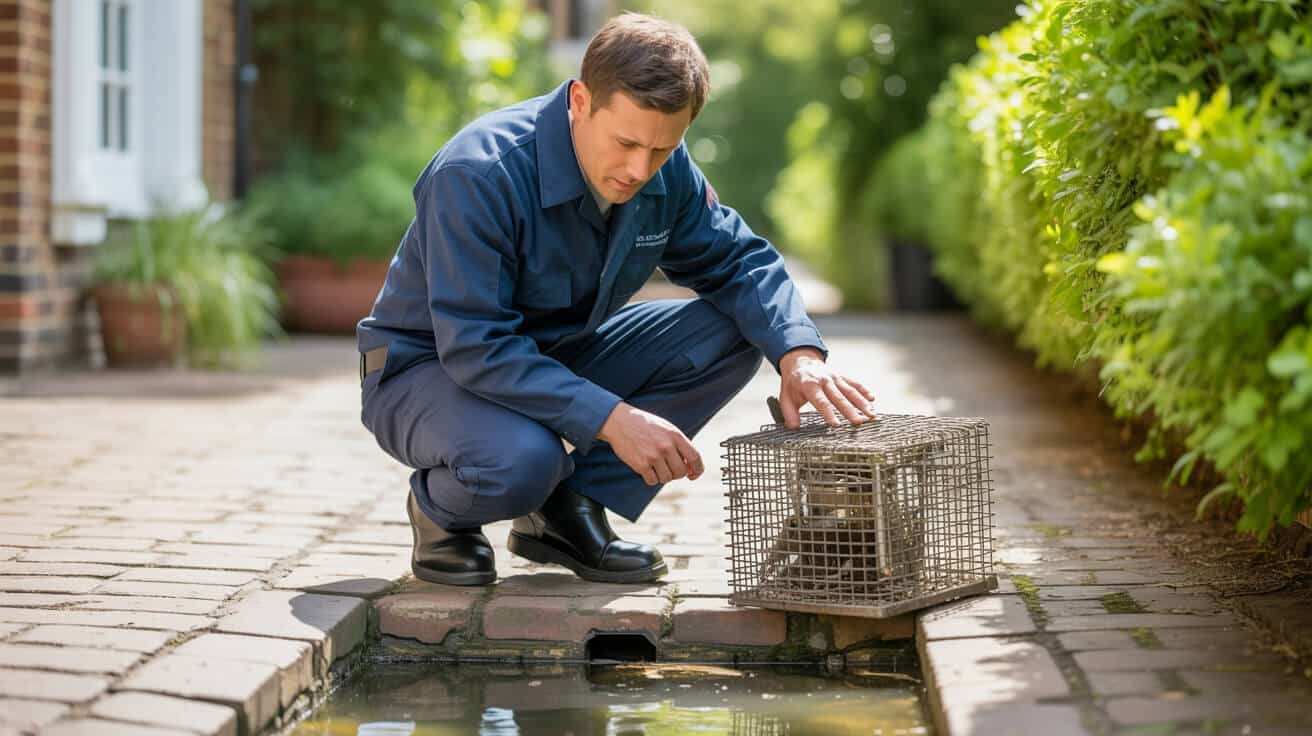
Owners and property teams often worry they’ll be forced to choose between outdated, wasteful systems and ugly, intrusive upgrades. Yet England’s conservation system actually offers room for flexibility, provided improvements are well-justified and practically reversible.
Heritage compliance doesn’t block efficiency—it demands smarter, more reversible planning so you get both comfort and approval.
Smart routes to heritage-friendly upgrades:
- Reversible Interventions: Use microbore pipework clipped above skirting, easily unbolted radiators, and modular smart controls. Opt for routes that could, if needed, be reversed or patched without marring original material.
- Parts and Proof: WRAS-approved and period-matched fixtures (aged copper, cast iron, plain white modular radiators) get better reception among conservation planners and future buyers.
- Certification Discipline: Every instal gets a folder—installation steps, parts, compliance certificates (WRAS, G3, GasSafe, WaterSafe), and permission proofs are included. Log any energy-saving adjustments (condensing boiler logic, weather compensation controls) with rationale if they vary from Part L norms.
- Written Justifications: Heritage engineers should arm you with a statement explaining why certain upgrades can’t follow “new build” Code for Sustainable Homes levels. If, for instance, insulation behind sash frames would harm original profiles, get this caveat down in writing.
Skipping documentation raises stakes dramatically: you risk loss of insurance, sale delays, or compliance delays if called to demonstrate rationale after work is done. Always insist on engineer and product credentials up front (WRAS, 2024).
What Are the Steps for a Problem-Proof Listed Plumbing or Heating Upgrade?
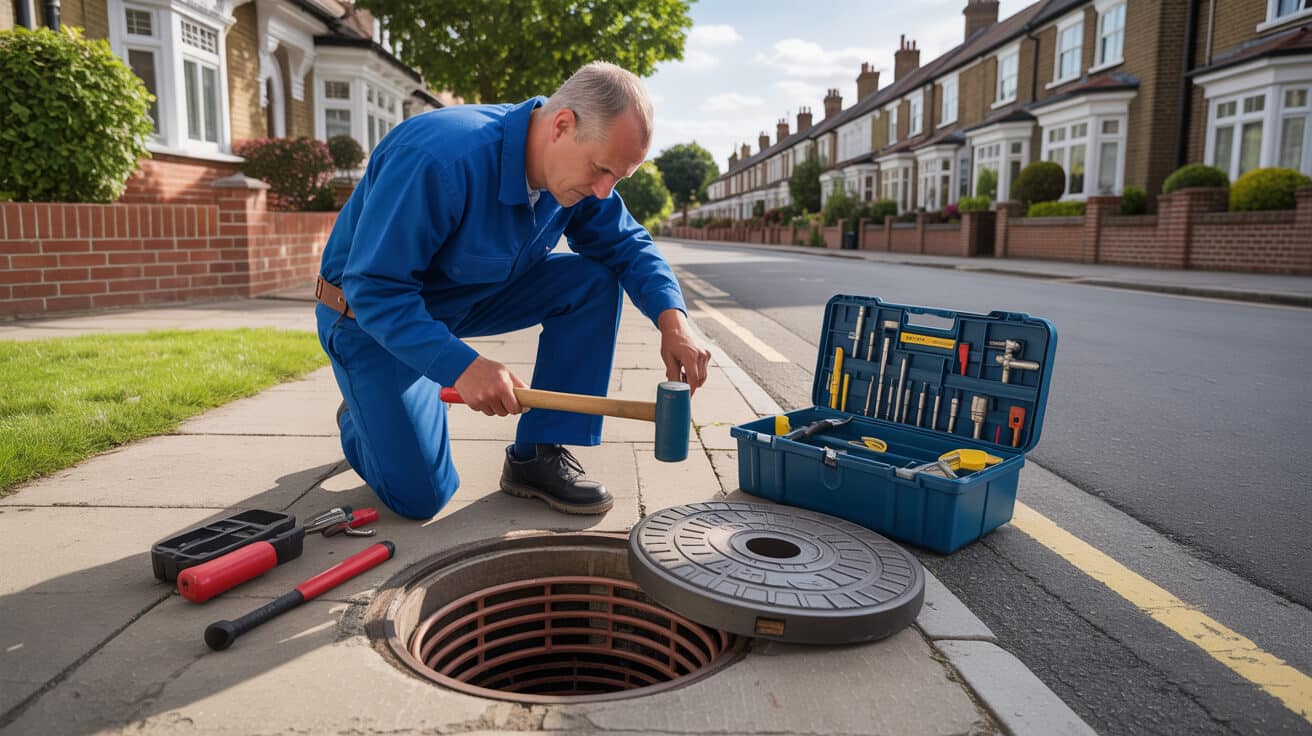
Top teams handle every upgrade—minor or major—by building an unbreakable evidence chain. Make this the heart of your project; when the compliance file is solid, everything from sale to claim to sale sails through.
Five Steps to Deliver Heritage-Safe Upgrades
- Conservation Opening: Before specs are drawn up, reach out to council for guidance—submission of initial sketches or objectives is often required.
- Visuals and Specs: Every routing, joint, and finish is plotted, photographed, and explained—rids you of doubt, and makes LBC more pragmatic.
- Full Application Submission: All alterations, big or small, should be listed—state how the work is reversible, non-intrusive, and mindful of original features.
- Heritage Engineer Appointment: Only use engineers with a CV of achieved consents. Proof matters far more than price per hour.
- Stagewise Documentation: From isolation to pressure test, every step gets logged, with visible and concealed works photographed and signed for compliance.
A complete compliance file isn’t about red tape—it’s the most valuable document a heritage asset can have at sale or audit.
Skipping a single step cuts your competitive advantage and deepens every risk—unresolved, these can stall sales, complicate insurance, or even see tenants move out for unresolved repairs.
Why Only Credentialed Heritage Plumbers Protect Both Value and Peace of Mind
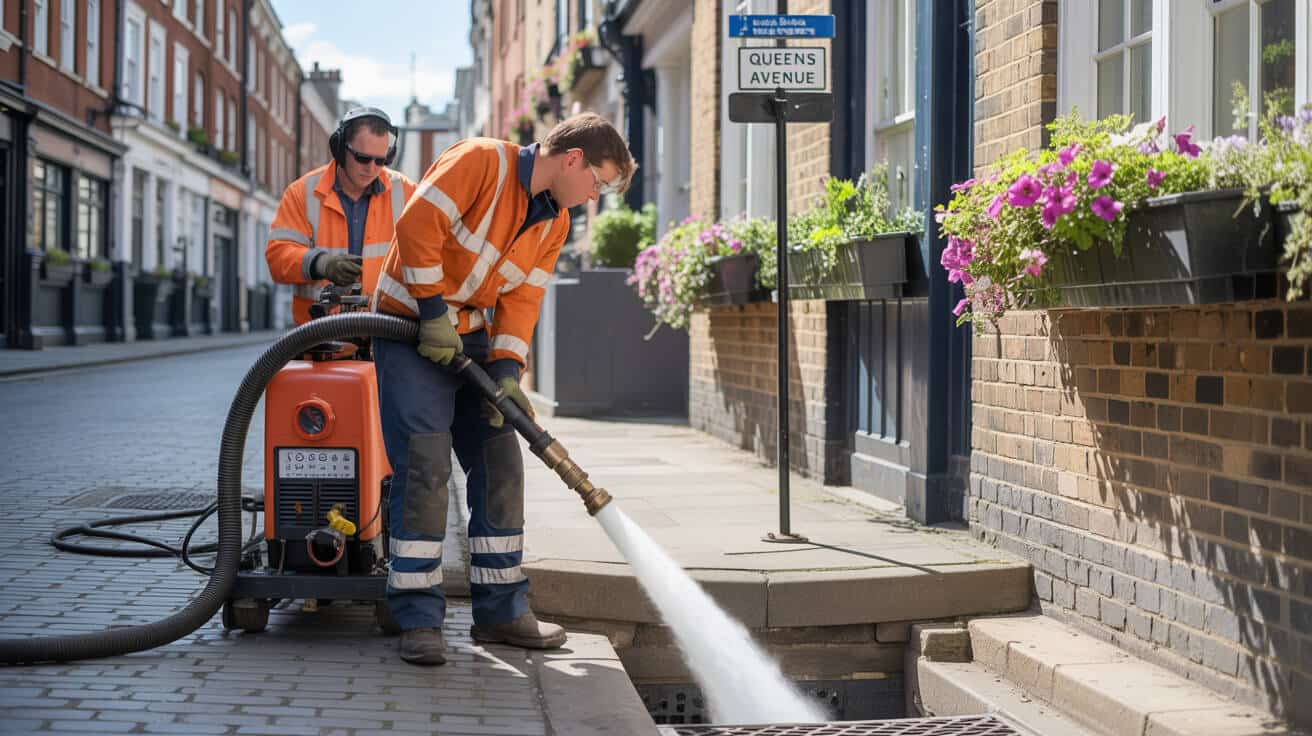
There’s a simple risk equation in London’s listed buildings: only documented, credentialed plumbers can deliver upgrades that stand up to scrutiny. The right credentials unlock peace of mind at every handover point, from agent to owner to insurer to buyer.
What sets the gold standard:
- Stage-Logged Reporting: Photos, diagrams, pressure test logs, and a “heritage reversibility record” accompany every upgrade.
- Paper (or Digital) Trail: Instal and commission every part (boiler, cylinder, mixer) with relevant WRAS, G3, GasSafe, and WaterSafe certificates. Give the client printed or cloud-access logbook records.
- Certified Handover: Clients get all permissions, certificates, warranties, and user guides at the finish—never an afterthought for future legal or insurance needs.
- Reversibility Statement: Every work order for visible or structural changes should lay out how reversibility is protected (removable covers, non-intrusive routing, etc.).
No investment or insurance underwriter worth their salt will accept less on a listed building. Anything unclear is a future repair, a legal risk, or a value drag for you.
Which Modern Systems Marry Comfort, Character, and Compliance in Heritage Homes?
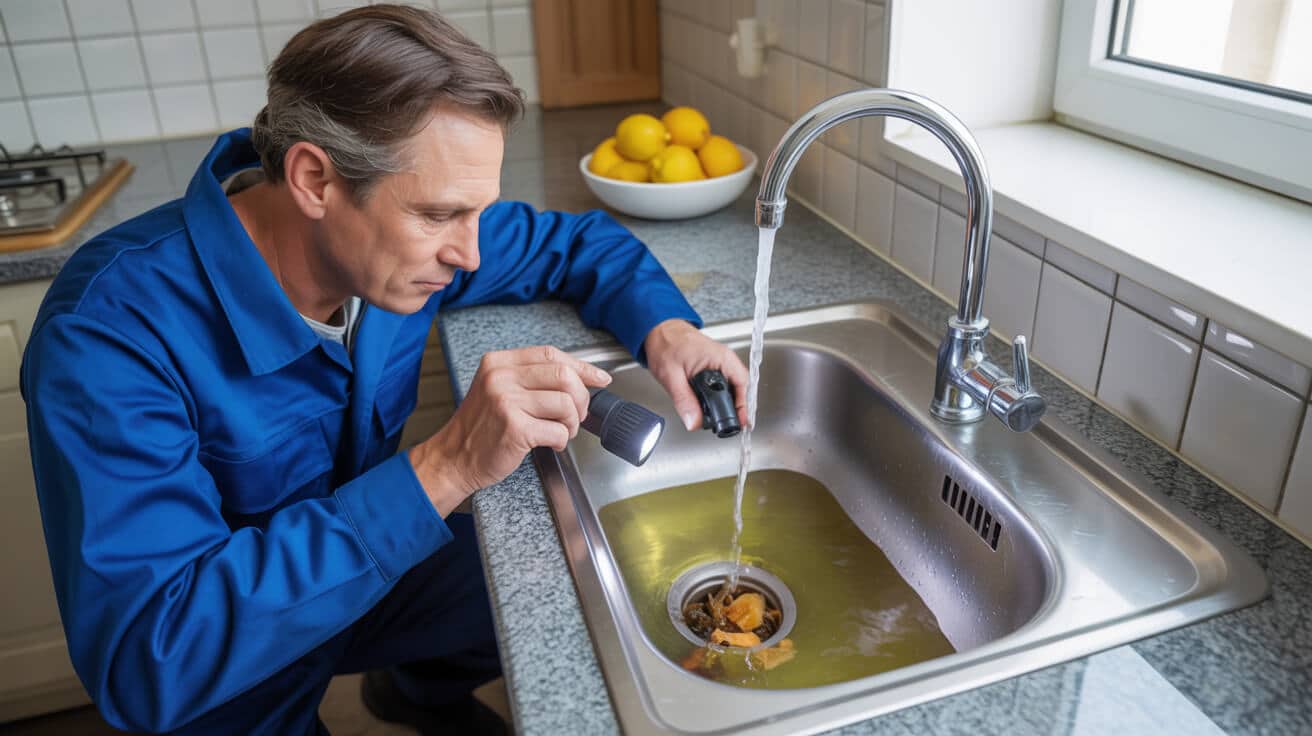
Choosing plumbing and heating solutions in a listed building means balancing comfort and compliance at every decision point. Modern, efficient systems are possible—but only if you account for visual impact, regulatory feedback, and reversibility from the outset.
Options that match both heritage and modern needs:
- Microbore/Modular Radiators: Small-bore pipes run above skirting and modular radiators, chosen in period-correct finishes, gain faster approval—and can be reversed without harming structure.
- Smart Controls: Wireless, battery-operated stats like Tado, Nest, or Hive allow for modern zoning and scheduling, but tuck discreetly into period settings. Surface cables are out—fully-concealed or decor-matched hardware wins favour.
- Low-Profile Underfloor Heating: Overlay UFH can sometimes be fitted—with permission—without disturbing original floors, especially in kitchens and baths. The golden rule: planner sign-off, impact diagram, and “easy uplift” if floors are historic.
- Heat-Only or System Boilers: Slightly more flexible with heritage consent than combis, especially when cylinder positions can remain unchanged. Always plot new flues or vents for minimal visual harm.
All upgrades need documentation—before and after photos, engineering schematics, and proof of “no permanent alteration” to the building’s character wherever possible (Historic England technical guidance).
Modern isn’t impossible for listed buildings. But improvisation, shortcuts, or off-the-shelf instals are a fast track to value drag and compliance failure.
How Does Complete Documentation Defend Your Asset, Avoid Delays, and Ease Sales?

Having a compliance portfolio is your shield, not just more paperwork. In listed buildings, every smooth sale or stress-free insurance claim usually comes down to the clarity of your records—not the flash of your brassware or tile.
A smart, accessible compliance file can mean the difference between a sale in weeks and a property that sits for months under scrutiny.
How to bulletproof your asset:
- Digital Folders First: Store permissions, stage-by-stage logbooks, all product and system certificates (WRAS, G3, GasSafe, WaterSafe), and every photo in one secure place (cloud and hard copy).
- Legal Paper Trail: Ensure every physically posted cert (LBC, planning, insurance) is safely filed for future reference—insurers and surveyors want originals, not just scans.
- Service Log Discipline: Every annual check (boiler, G3, CP12) gets time-stamped and logged; gaps raise red flags with buyers and agents alike.
- Tradesman Verification: Every engineer, at every visit, adds their mark and date to the compliance log—no more lost-in-translation service calls.
While some see compliance as a chore, in London’s heritage market it’s leverage—buyers bid harder, pre-let reviews are frictionless, and your asset’s litigation and insurance risk plummets.
Book a London Listed Property Assessment With Plumbers 4U
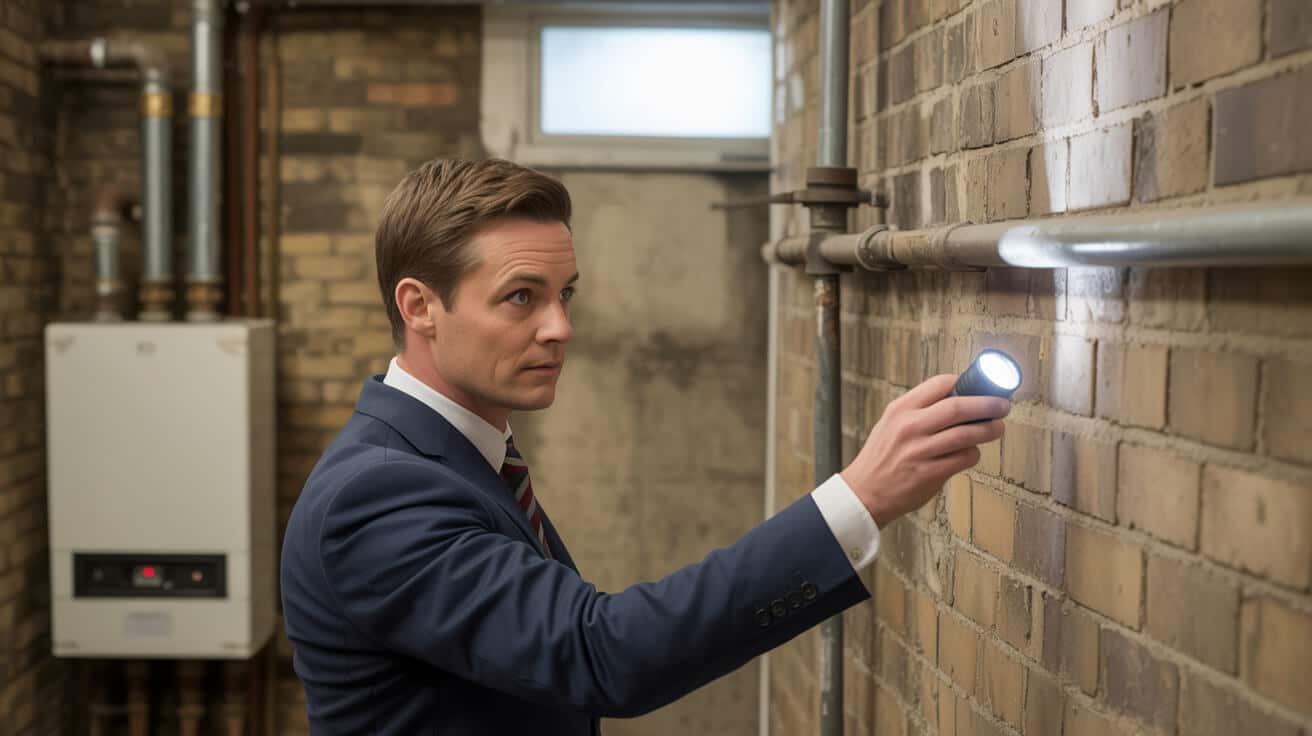
Your property is only as valuable as the paper (and pixel) trail behind its upgrades. At Plumbers 4U, we’re not just pipe-fitters—we’re your insurance policy, your risk managers, and your compliance partners for every heritage project.
- Request our free compliance checklist: LBC, WRAS, and insurance all in one step-by-step document.
- Book a zero-intrusion assessment: Our engineers will map your entire plumbing and heating network without disturbance—so you know your upgrade options before any work begins.
- Live advice, instant: WhatsApp for emergencies or advice, 7am-9pm, so no decision leaves you unprotected.
- Transparent process: See our case galleries, checklists, sample compliance packs, and unbiased client reviews—upfront, every time.
Every step we take is photographed, logged, and explained—because in a listed property, trust is built with evidence, not just promises.
Your listed home is both art and asset. When you partner with us, your upgrades are mapped, certified, reversible, and above all—defensible. That’s peace of mind you can take to the bank, the insurer, and the next owner.
Frequently Asked Questions
What permissions must you secure before updating plumbing or heating in a listed London property?
You must obtain formal Listed Building Consent (LBC) before making any plumbing or heating changes that might affect a listed building’s historic structure or appearance, with separate planning permission if external features—like flue terminals or vent pipes—are involved.
London’s heritage officers inspect every alteration with a forensic eye, not just at face value, but down to what’s concealed behind plaster, beneath floors, or within cornices. Even a hidden pipe reroute or a discreet thermostatic valve instal can attract scrutiny if it leaves traces on antique joinery or interrupts the original pipework pattern. Skipping LBC isn’t a harmless shortcut—it’s a direct route to enforcement action, forced undoing at your own expense, voided insurance, and delays or complications for future sales and remortgages.
In a listed property, what’s unseen today may determine tomorrow’s sale price—or derail it.
To keep on the right side of heritage law, start with a full mapping of current services, provide detailed annotated plans, and proactively engage borough conservation staff—ideally with photographic logs and a reversibility statement for each task. Plumbers 4U specialists act as your compliance backbone, preparing evidence needed for smooth permission, clear council communication, and a painless audit trail down the line.
How do you ensure you’re fully compliant from the start?
- Map all visible and concealed plumbing and heating routes before design work.
- Submit high-quality diagrams and intent letters to the local heritage officer for feedback.
- Collect and store written LBC and, if external, planning approval—never begin work on verbal assurances.
- Retain communication trails (emails, letters, annotated plans) as part of your official compliance pack.
How do listed building regulations restrict your choice of pipework, fittings, or system layout?
Listed building regulations require all new pipes, fittings, and layouts to be sympathetic (in design and materials) and fully reversible; every modern addition must have minimal visual impact and leave the historic building easily restorable.
Routine solutions—PVC pipes, modern chrome rads, or hidden wires in new chases—are ruled out or tightly limited. Instead, every proposal for a London listed property must show how the method either matches period style or can be removed without a trace. Microbore or surface pipes run above skirting, fixed with non-invasive clips, are typical. Only fittings that echo the original era—like cast iron column radiators or traditional lever taps—are usually approved where visible. For hidden runs, even plastic or flexible barriers are allowed if you justify their use and keep them entirely out of sight. Councils sometimes demand “technical justification” for any deviation from traditional materials, and photographic proof that new work hasn’t harmed the old.
These constraints aren’t red tape for tradition’s sake—they safeguard your resale value, property insurance, and access to heritage grants. Plumbers 4U’s experienced teams leverage WRAS-approved, period-appropriate products and supply all the documentation councils love to see: datasheets, sample images, and reversibility statements.
The upgrades that pass with flying colours are the ones future owners never notice or have to battle to remove.
What meets the “sympathetic” and “reversible” benchmark?
- No new chases or drill holes in protected materials.
- Clip-on, boxed, or exposed runs that can be completely removed.
- Documented, period-matching products or, where modern, full technical and visual justification kept on file.
- Annotated plans showing each intervention’s reversibility.
What is the stepwise process for achieving a 100% compliant plumbing or heating upgrade in a London listed property?
The compliant pathway is survey → pre-application advice → formal proposal with annotated plans and specs → heritage-accredited works → stage-by-stage documentation → end-of-project compliance portfolio.
Start with a thorough photo-logged survey: list and photograph all existing plumbing and heating, covering pipe routes, fixtures, radiators, stopcocks, and joinery details. Get early-stage pre-application feedback from your local conservation officer to flag showstoppers. A bulletproof proposal includes designer plans, a table of all intended parts (with WRAS/historic approvals), technical datasheets, written explanations of every route, and a reversibility statement for each fix. Wait for written heritage and planning approvals before breaking ground—no exceptions.
Appoint only engineers with WRAS, G3, GasSafe, and demonstrable listed building experience. Document each site intervention: image logs, invoices, and engineer sign-offs. Compile every consent, product spec, photo, and service log into a compliance pack—the “passport” to future sales, audit security, and smooth insurance claims.
An impeccable compliance pack secures today’s peace of mind and tomorrow’s leverage in any negotiation.
Essential steps for compliance—no gaps:
- Comprehensive system mapping and logbook (images and notes)
- Early council advice and iterative proposal submission
- Only use heritage-competent, fully accredited installers
- Track execution stage-by-stage: digital logs with photos, serials, and method notes
- Final compliance pack includes every document, certificate, and maintenance record
What risks do DIY or generic trades pose for listed properties in London?
DIY and non-specialist trades risk legal penalties, insurance rejection, permanent heritage damage, and resale headaches for listed homes.
Unaccredited or casual “multitraders” seldom understand the granular demands of listed status: how not to drill historic beams, which walls may never be cut, or how to route new pipes without touching protected features. The council may issue enforcement notices forcing you to reverse all changes—often requiring heritage-grade contractors to “unpick” even hidden works at your expense. Insurers spot these tell-tale signs fast: the wrong fitting or botched floorboard can lead to claims being denied after a leak, freeze, or breakdown. This alters not just your financial exposure, but your ability to refinance, remortgage, or sell down the line.
One wrong fix in a listed home can echo across years—raising costs, slowing sales, and dimming a building’s history.
Table: Heritage-vetted vs. DIY approach
| Method | Legal Position | Insurance/Grant Impact | Lasting Value |
|---|---|---|---|
| DIY/Generic Trades | High reversal risk, fines | Claims often voided | Permanent heritage damage |
| Heritage-Certified | Full compliance, protected | Claims valid, grant secured | Value protected, futureproof |
Which approved technologies can increase comfort in listed homes—without putting compliance at risk?
Compliant comfort upgrades include microbore pipes, modular radiators in period finishes, overlay underfloor heating (when removable), and cable-free smart thermostats with pre-approval—all engineered for reversibility.
Modern comfort can coexist with heritage rules, but only when systems are picked and installed with reversibility front and centre. Surface-mounted microbore pipes, clipped above skirting, can be lifted “with no mark left behind.” Modular radiators, styled in cast-iron or steel with historic trims, pass visual inspection while heating efficiently. Overlay underfloor heating works in non-sensitive zones when it can be removed without floor damage and is explicitly logged in the consent file. Wireless app controls like Nest or Tado become a compliance asset: no new chases, no holes, just intelligent heating managed remotely. Even boilers and cylinders can be tucked discreetly in out-of-sight areas, flues routed via old holes or boxed for reversible removal.
True comfort for a listed home is seamless—felt, never seen, and always ready to be rewound by the next steward.
Table: Compliant comfort upgrades for London’s heritage homes
| Upgrade System | Comfort Benefit | Heritage/Planning Status | Compliance Note |
|---|---|---|---|
| Microbore surface pipework | Fast, clean instals | Fully reversible, low visual | Quickest consent |
| Modular heritage radiators | High aesthetic/efficiency | Era-matched, non-invasive | Favoured by officers |
| Overlay underfloor heating | Even heat, minimal build | Removable, only in permissible areas | File detailed reversibility |
| Wireless smart controls | Zoned temp, no wires | Non-intrusive, council friendly | Consent easier, no chases |
What compliance documents protect you at sale, audit, or insurance review—and how are these best organised?
Safeguard your property’s value with a full digital and hardcopy compliance pack: all permissions, accreditations, annotated installation logs, service records, and reversibility documentation—each logged and ready for scrutiny.
Don’t treat paperwork as an afterthought. Every council, insurer, mortgage auditor, and buyer wants a transparent record that proves you did every job right. Your pack must include LBC letters, planning consents, installer/engineer certificates (WRAS, GasSafe, G3, WaterSafe), full annotated installation diagrams, step-by-step photo logs, signed-off part lists, and a running service/maintenance record. Lack of documentation puts value at risk—sales collapse, insurance can slip through your hands, and auditors clock every missing piece as a red flag. Plumbers 4U supplies every heritage client with a ready-to-go compliance portfolio, layered with certificates, images, and logs for peace of mind and easy renewal, resale, or insurance conversations.
For every listed property owner, a bulletproof compliance pack is worth more than a new boiler—it’s your guarantee against the unknown.
File checklist: the must-haves for audit-proof protection
- Official LBC and planning letters—scanned, stamped, and digitally archived
- WRAS, GasSafe, G3, WaterSafe, and heritage-cert installer credentials
- Before/during/after photographic logs (timestamped and annotated)
- Annotated plans including every reversible intervention
- Signed maintenance/service records and annual logs
- Compliance sign-off and certificates for all key works
Book a compliance survey or pre-works consultation with Plumbers 4U—your guarantee that every upgrade adds value, future-proofs your historic home, and keeps tomorrow’s compliance simple, whatever the project brings.
